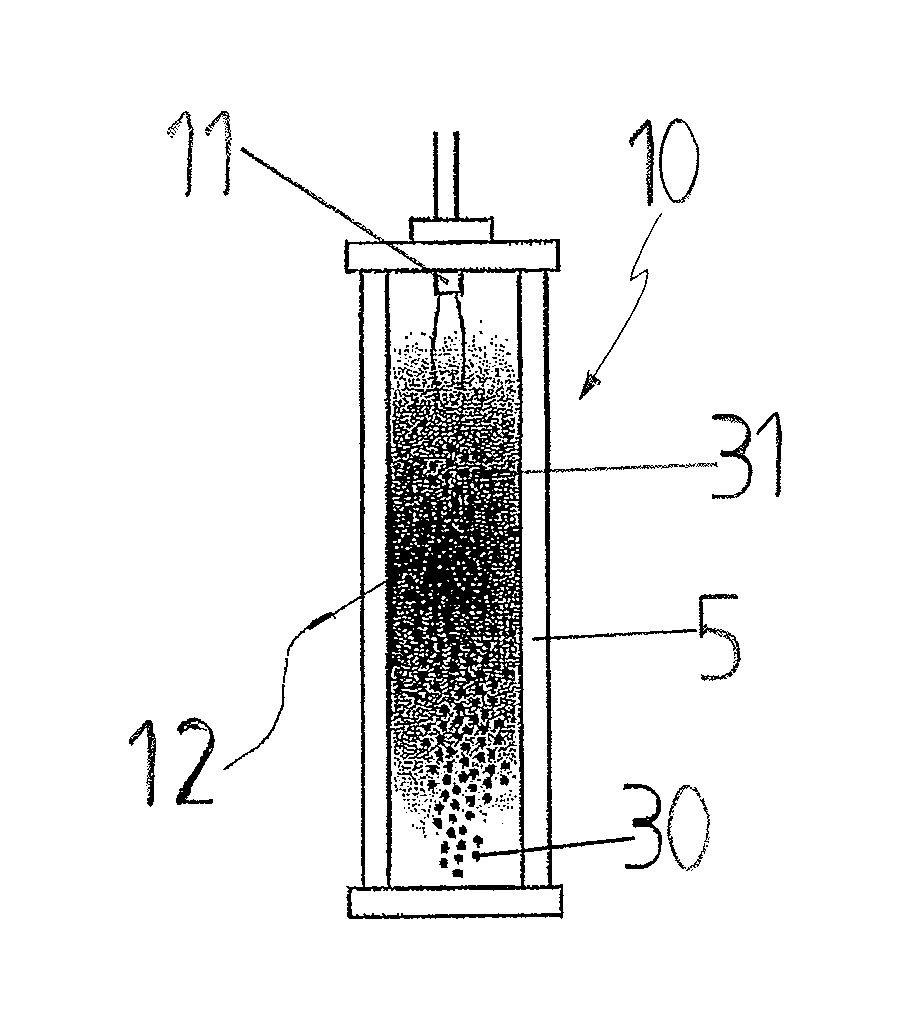Apparatus and method for charging nanoparticles
a nanoparticle and apparatus technology, applied in the direction of chemistry apparatus and processes, manufacturing tools, coatings, etc., can solve the problems of non-uniform flux of nanoparticles, difficult to control the flux of nanoparticles used in industry, and difficult to deposit uniformly, so as to achieve efficient control or guide the nanoparticles, the effect of efficient and industrially applicabl
- Summary
- Abstract
- Description
- Claims
- Application Information
AI Technical Summary
Benefits of technology
Problems solved by technology
Method used
Image
Examples
Embodiment Construction
[0012]FIG. 1A shows a device 10 for producing nanoparticles 30. The device 10 comprises an atomizer 11 for atomizing a one or more liquid raw materials into droplets 31 in chamber 5. The liquid raw materials are atomized preferably using a two-fluid atomizer 11 in which atomization gas or gases is fed to the two-fluid atomizer 11 for atomizing the liquid raw material into droplets 31. The formed droplets 31 are further conducted to a flame 12 generated with the aid of fuel gases and oxidizing gases. The flame 12 is preferably provided with the two-fluid atomizer 11 by supplying the fuel gases and the oxidizing gases from the atomizer 11, whereby droplets 31 are formed in the same device with the flame 12. The fuel gases and / or oxidizing gases may also be used as atomization gas for forming the droplets 31 or they me be supplied separate from the atomization gases. The droplets 31 are passed into the flame 12 in the liquid form and in the flame 12 the liquid raw materials are convert...
PUM
| Property | Measurement | Unit |
|---|---|---|
| size | aaaaa | aaaaa |
| diameter | aaaaa | aaaaa |
| diameter | aaaaa | aaaaa |
Abstract
Description
Claims
Application Information
 Login to View More
Login to View More - R&D
- Intellectual Property
- Life Sciences
- Materials
- Tech Scout
- Unparalleled Data Quality
- Higher Quality Content
- 60% Fewer Hallucinations
Browse by: Latest US Patents, China's latest patents, Technical Efficacy Thesaurus, Application Domain, Technology Topic, Popular Technical Reports.
© 2025 PatSnap. All rights reserved.Legal|Privacy policy|Modern Slavery Act Transparency Statement|Sitemap|About US| Contact US: help@patsnap.com


